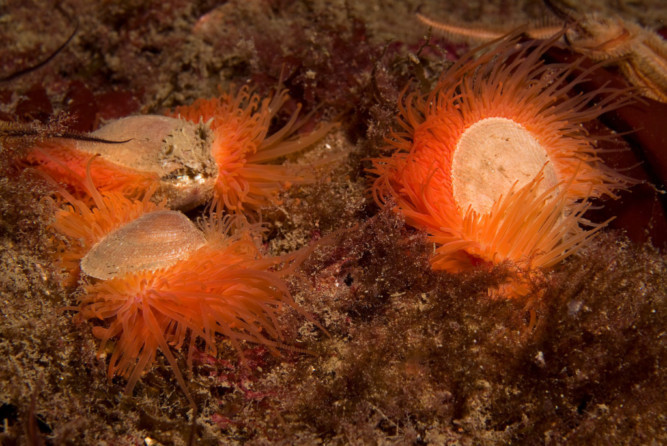THE DISCOVERY of a large shellfish reef on the west coast of Scotland could be the biggest find of its kind in the world, experts believe.
More than 100 million brightly coloured and rare shellfish have been found in Loch Alsh, a sea inlet between Skye and the mainland.
The reef of flame shells, or Limaria hians, was found to cover an area of 4.6 square miles (7.5 sq km) during a survey commissioned by Marine Scotland.
It is the largest known colony of flame shells in the UK and possibly the world, according to experts.
Scottish Environment Secretary Richard Lochhead said: “The seas around Scotland are a hotbed of biodiversity and the clean and cold waters support many fascinating and beautiful species.
“With Scottish waters covering an area around five times bigger than our landmass, it’s a huge challenge to try and understand more about our diverse and precious sea life.
“This important discovery may be the largest grouping of flame shells anywhere in the world.
“And not only are flame shells beautiful to look at, these enigmatic shellfish form a reef that offers a safe and productive environment for many other species.”
Flame shells have a similar shape to scallops with many neon orange tentacles that appear between the two shells. They group together on the sea bed and their nests create a living reef to support hundreds of other species.
The Loch Alsh survey was carried out by Heriot-Watt University on behalf of Marine Scotland.
Ben James, marine survey and monitoring manager at Scottish Natural Heritage, said: “Our job has been to advise ministers on suitable places for Marine Protected Areas (MPAs) and to do that we need to have enough information about what’s in the marine environment.
“Whilst we had some records of flame shells in Loch Alsh, we had no idea how big the bed was.
“We needed more certainty before recommending them as a protected feature of this Marine Protected Area proposal,” said Mr James.
